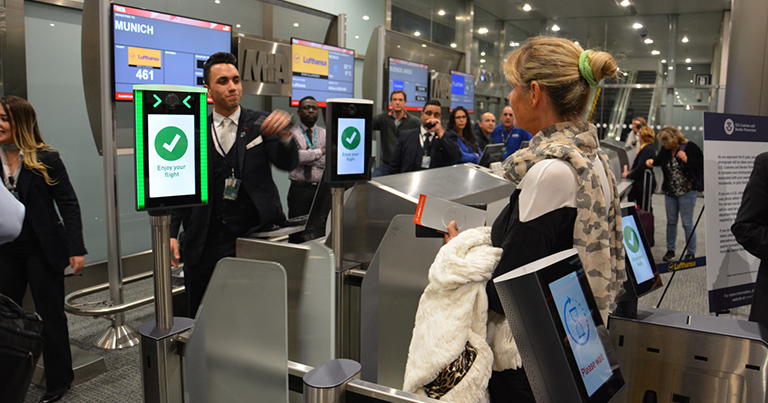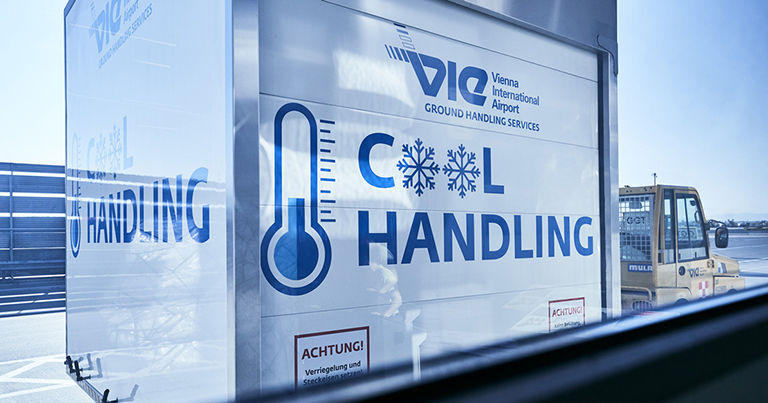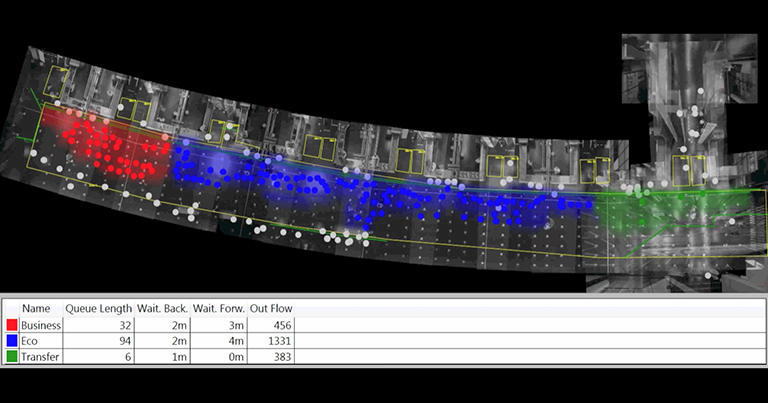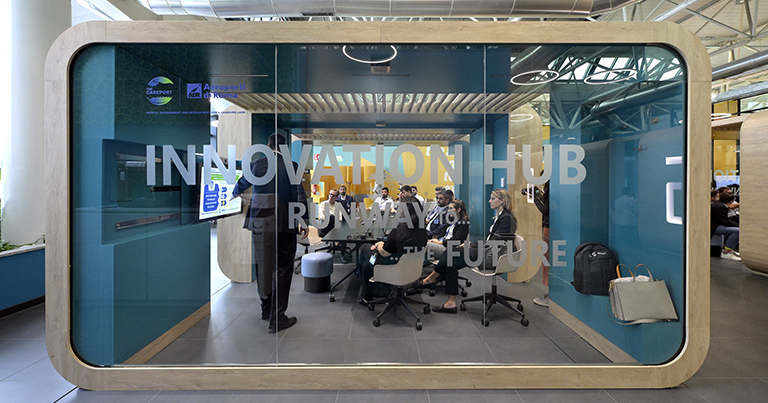MIA, Southwest, VIE, United and ADR discuss how they are exploring IoT to optimise operations, enhance efficiency and take CX to the next level
Data is critical to the aviation industry and the Internet of Things (IoT) plays an important role in collecting that data, helping to optimise operations, enhance efficiency and take customer experiences to the next level. Indeed, IoT is one of the three key themes of the FTE Digital, Innovation & Startup Hub in 2024, alongside Robotics and Artificial Intelligence (AI). In this deep-dive article, Johnathan Lewis, Division Director Innovation, Miami International Airport; Kevin Kleist, Head of Emerging Trends, Southwest Airlines; Thomas Dworschak, Head of IT Digitalization & Innovation, Vienna Airport; Kristen Berndt, Senior Manager, Customer Strategy & Innovation, United Airlines; and Stefano Biondi, Head of Maintenance Engineering, Aeroporti di Roma, share their insights into the latest developments and trends in the realm of IoT.
Miami International Airport implementing comprehensive IoT framework as it evolves into a ‘Smarter Airport’

Miami International Airport is evolving into a ‘Smarter Airport’ to handle increasing passenger and cargo traffic. This transformation involves implementing a comprehensive Internet of Things (IoT) framework managed from a central cloud-based hub.

Johnathan Lewis, Division Director Innovation, Miami International Airport: “Critical IoT applications at MIA encompass managing passenger flow, conducting predictive maintenance, monitoring the environment, and enhancing security.”
Miami International Airport (MIA) – a Corporate Partner of the FTE Digital, Innovation & Startup Hub – is evolving into a ‘Smarter Airport’ to handle increasing passenger and cargo traffic. This transformation involves implementing a comprehensive Internet of Things (IoT) framework managed from a central cloud-based hub. “This system integrates sensors, devices, and systems across the airport, facilitating real-time data gathering and analysis,” explains Johnathan Lewis, Division Director Innovation, Miami International Airport. “Critical IoT applications at MIA encompass managing passenger flow, conducting predictive maintenance, monitoring the environment, and enhancing security. The goal of employing IoT is to boost operational efficiency, tailor passenger services, heighten safety and security, and cut costs. Ultimately, this will lead to an improved experience for passengers, business partners, and employees.”
By integrating IoT, airports can transform into smarter, more efficient hubs that offer enhanced customer experiences, drive revenue growth, and contribute to sustainability. “IoT enables real-time data analysis for smoother operations, personalised services, and informed decision-making,” says Lewis. “This leads to improved resource allocation, reduced environmental impact, and new revenue opportunities through optimised pricing, retail, and advertising.”
Lewis adds that, by integrating real-time operational visibility with proactive infrastructure management, airports can optimise processes, resource allocation and passenger experiences, while enhancing safety and security. “Utilising sensors for predictive maintenance can reduce costly breakdowns and disruptions. Real-time alerts and anomaly detection systems enable swift incident response, protecting passengers and assets. Additionally, data-driven insights empower airports to move from reactive decision-making to proactive planning, improving operational efficiency, enhancing passenger satisfaction, increasing revenue, and strengthening security.”
Southwest actively exploring the significant role IoT can play in data collection across all facets of operations

Kevin Kleist, Head of Emerging Trends, Southwest Airlines: “Understanding the critical importance of data to our operations, we are actively exploring the significant role IoT can play in data collection across all facets of our operations.”
Southwest Airlines – a Corporate Partner of the FTE Digital, Innovation & Startup Hub – is currently harnessing the power of the Internet of Things (IoT) for data acquisition for its Facilities Teams and to streamline control processes with its Ground Operations Teams. “Understanding the critical importance of data to our operations, we are actively exploring the significant role IoT can play in data collection across all facets of our operations,” says Kevin Kleist, Head of Emerging Trends, Southwest Airlines and Head of Innovation, Digitalisation & Startup Engagement, Future Travel Experience.
IoT was selected as a key theme of the FTE Digital, Innovation & Startup Hub in 2024 as data is critical to the aviation industry, and IoT plays an important role in collecting that data. “Within the industry, data is helping with operational efficiency driving predictive maintenance, with safety improvements for real-time monitoring, with providing an enhanced customer experience through personalisation, and with regulatory compliance to help with accurate reporting,” Kleist explains. “IoT is pivotal in collecting this data, providing real-time insights and predictive capabilities to keep the aviation industry moving forward efficiently and safely.”
The potential impact of IoT in the aviation industry will help drive optimised operations, fuel efficiency, and real-time monitoring, which reduces downtime and costs. Kleist shares that it also enhances efficiency by enabling precise asset management, route optimisation, and seamless integration of various systems. “Additionally, IoT elevates the customer experience by offering personalised services, improved inflight connectivity, and streamlined processes from check-in to baggage handling, ensuring a smoother, more enjoyable journey.”
Hear more from Southwest at FTE Global – the “CES of Aviation” – taking place in Los Angeles on 28-30 October 2024. Kevin Kleist, Head of Emerging Trends, Southwest Airlines, is participating in the FTE AI Symposium, delivering a joint presentation with Christiaan Hen, CEO, Assaia, titled ‘Southwest Airlines is leveraging computer vision technology to improve turnaround performance at the gate. How successful has this effort been, and how might it further leverage the technology going forward?’
Meanwhile, Kleist is also participating in a session titled ‘No Hands on Bags – is this the future of baggage handling?’ in which the panel will share ideas and views around how feasible a future without tags and workforce touching bags could be.
Register for FTE Global 2024 >>
Vienna Airport on the huge potential of IoT technologies

Vienna Airport is already using the Internet of Things (IoT) in several different areas. For example, the temperature of cargo with the need for cooling is monitored from the time of arrival at the warehouse until it is loaded on an aircraft and of course the other way around.
The Internet of Things (IoT) is a foundational part of the digital transformation that is taking place in all industries. Vienna Airport – a Corporate Partner of the FTE Digital, Innovation & Startup Hub – believes that, especially for airports as big physical infrastructure providers, these technologies offer huge potential. “Having real-time data available from all over the premises enables an accurate view on the actual situation at all times,” explains Thomas Dworschak, Head of IT Digitalization & Innovation, Vienna Airport. “This opens up new opportunities in resource use and process control – and only with this data is it possible to leverage the use of Artificial Intelligence.”

Thomas Dworschak, Head of IT Digitalization & Innovation, Vienna Airport: “Having real-time data available from all over the premises enables an accurate view on the actual situation at all times. This opens up new opportunities in resource use and process control – and only with this data is it possible to leverage the use of Artificial Intelligence.”
The potential impact of IoT is significant in terms of optimising operations, enhancing efficiency and taking the customer experience to the next level. Dworschak highlights that IoT is the basis for several new approaches, while Artificial Intelligence and Machine Learning will boost progress in all of these:
- Digital twins for a comprehensive view on the current situation, e.g. passenger flows or ground handling, and quick reaction after detection of anomalies.
- Real-time asset tracking for optimised use.
- Predictive maintenance for improved resource management and lower downtimes.
- High-quality and real-time predictions for better information to partners and customers.
- Highly personalised and location-based customer services.
Vienna Airport is already using IoT in several different areas. “Building control is mostly done automatically, both in the terminals as well as in the office buildings. We increase the energy efficiency of our buildings by using data from various sensors,” says Dworschak. “Passenger flow is monitored at all critical waypoints on the passenger journey, automated alerts allow us to react quickly in case of irregularities. Demand-oriented cleaning is done based on the number of people entering or using certain areas. The temperature of cargo with the need for cooling is monitored from the time of arrival at the warehouse until it is loaded on an aircraft and of course the other way around.”
In addition, there are some areas in which the benefits of IoT use are not yet sufficient, but where Vienna Airport is closely monitoring technology development. These include: vehicle positioning and telemetry, automated inspection of fire protection systems, demand-oriented waste collection, automated cleanliness checks, and tracking of free to use strollers in the terminal.

Thomas Dworschak, Head of IT Digitalization & Innovation, Vienna Airport: “Passenger flow is monitored at all critical waypoints on the passenger journey, automated alerts allow us to react quickly in case of irregularities.”
United Airlines on the power of IoT to help make actionable operational decisions and enable effective communication

Kristen Berndt, Senior Manager, Customer Strategy & Innovation, United Airlines: “Various software solutions are becoming available in the marketplace to provide airlines with a comprehensive view of IoT technology and equipment in an airport environment.”
Kristen Berndt, Senior Manager, Customer Strategy & Innovation at United Airlines (a Corporate Partner of the FTE Digital, Innovation & Startup Hub) shares that, as technology evolves, and airlines begin using more sophisticated equipment that is remote-controlled, automated or autonomous in nature, tracking the location and status of that equipment will be a critical operational need. “Various software solutions are becoming available in the marketplace to provide airlines with a comprehensive view of Internet of Things (IoT) technology and equipment in an airport environment,” says Berndt. “Having a birds-eye view of all the equipment moving around an airport while simultaneously being able to drill into details when issues arise gives operators the power to make actionable operational decisions and enable effective communication with customers.”
Hear more from United Airlines at FTE Global – the “CES of Aviation” – taking place in Los Angeles on 28-30 October 2024. Kristen Berndt, Senior Manager, Customer Strategy & Innovation at United Airlines, is participating in two sessions: The ‘FTE Robotics Think Tank’ Live – building on the workshop brainstorming at the 2nd FTE Aviation & Robotics Summit in Pittsburgh this May, plus ‘No Hands on Bags – is this the future of baggage handling?’
Meanwhile, Stanley Tran, Corporate Development – United Airlines Ventures, United Airlines, is speaking in the FTE Air MobilityX Keynote Session. Tran will deliver a joint presentation alongside Bryan Bernhard, Chief Growth & Infrastructure Officer, Archer, titled ‘Archer aims to begin operating eVTOL services for United Airlines in key United hubs like Newark International and Chicago O’Hare, so how will this all work in practice and what can customers expect from the experience?’
Register for FTE Global 2024 >>
Aeroporti di Roma: “IoT devices will transform the airport into a smart airport”

Stefano Biondi, Head of Maintenance Engineering, Aeroporti di Roma (ADR) is a member of the ADR Innovation Cabin Crew, mentoring startups in the Innovation Hub at Rome Fiumicino Airport.

Stefano Biondi, Head of Maintenance Engineering, Aeroporti di Roma: “IoT will be the technological enabler that will allow airports to better understand the operating status of the equipment, how infrastructures are used, integrating this information with the passenger experience.”
The Internet of Things (IoT) will allow airports to extract more information and data from their assets and processes. “It will be the technological enabler that will allow airports to better understand the operating status of the equipment, how infrastructures are used, integrating this information with the passenger experience,” shares Stefano Biondi, Head of Maintenance Engineering, Aeroporti di Roma (ADR).
ADR – a Corporate Partner of the FTE Digital, Innovation & Startup Hub – has started several workstreams related to IoT since 2022 with the goal of maximise equipment availability and improve service level. “We are working to evolve the assets maintenance strategy from a reactive and preventive approach to a condition based/predictive approach and the process of extracting prognostic information from machines through the use of IoT sensors is the enabler to introduce the new maintenance strategy,” says Biondi. “The main use cases developed utilising IoT are on the following assets: translation equipment, baggage handling system, loading bridges, HVAC systems, water supply network, medium voltage substations, toilet equipment and infrastructure junctions.”
Using data coming from IoT sensors, airport stakeholders receive real-time updates on the progress of the passenger’s journey, on the status of operational processes and on infrastructures/equipment performance and are able to offer services, goods, and plan activities based on this information. “The new data coming from IoT devices will enable a new level of condition based/predictive analysis with a transversal impact on operational efficiency, safety, passenger experience enhancement and infrastructure resilience,” Biondi adds. “IoT devices will transform the airport into a smart airport.”